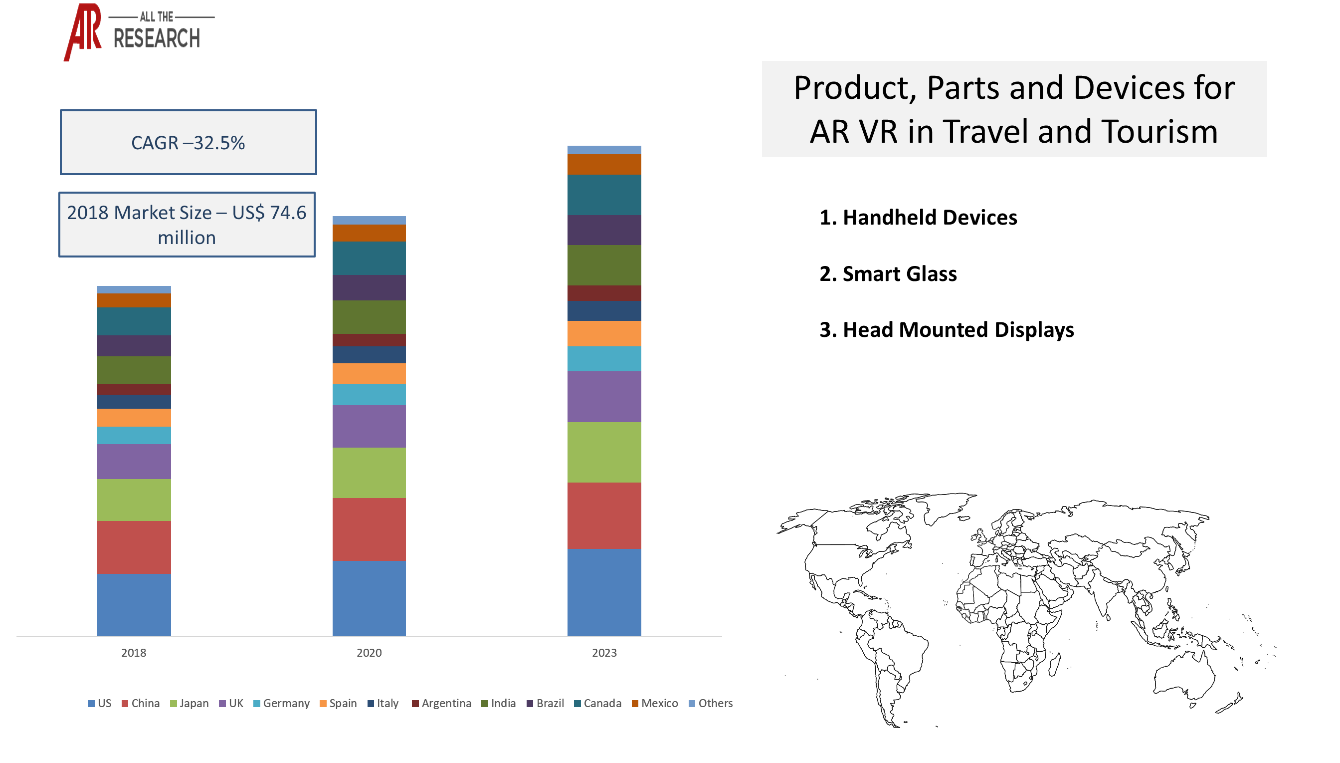The adventure travel market size has witnessed a remarkable surge, captivating the hearts of intrepid travelers seeking transformative experiences. This burgeoning industry caters to a diverse clientele, offering a myriad of thrilling adventures tailored to their aspirations and preferences. From adrenaline-pumping expeditions to immersive cultural encounters, the adventure travel market size continues to expand, fueled by a growing desire for authenticity and meaningful connections with the world.
With its ever-evolving landscape, the adventure travel market size presents both challenges and opportunities for businesses operating within this dynamic sector. Understanding the market dynamics, key trends, and competitive forces is crucial for success in this rapidly growing industry.
Market Overview
Adventure travel is a form of tourism that involves exploring remote and challenging destinations, often with a focus on physical activity and cultural immersion. It encompasses a wide range of experiences, from trekking and mountaineering to wildlife safaris and scuba diving.
The adventure travel market has experienced significant growth in recent years, driven by factors such as increased disposable income, a growing desire for authentic travel experiences, and advancements in technology that have made it easier to access remote destinations.
Types of Adventure Travel Experiences
Adventure travel experiences can be categorized into several types, each with its own target audience:
- Soft adventure:Designed for beginners or those seeking a more relaxed experience, with activities such as hiking, kayaking, and wildlife viewing.
- Moderate adventure:Suitable for those with some experience, featuring activities like trekking, mountain biking, and rock climbing.
- Hard adventure:Tailored for experienced adventurers, involving challenging activities such as mountaineering, polar expeditions, and extreme sports.
Market Segmentation

The adventure travel industry encompasses a diverse range of market segments, each with its unique needs, preferences, and travel motivations. Understanding these segments is crucial for tailoring marketing strategies and product offerings to effectively cater to their specific requirements.
Key market segments within the adventure travel industry can be identified based on various factors, including demographics, psychographics, and travel preferences. These factors influence individuals’ choices of adventure travel destinations, activities, and experiences.
Demographics
Demographic segmentation considers factors such as age, income, education, and occupation. Different demographic groups have varying adventure travel preferences and spending patterns.
- Younger travelers:Typically seek adrenaline-pumping activities and off-the-beaten-path destinations.
- Middle-aged travelers:Often prefer more comfortable and organized adventures, with a focus on cultural immersion and wildlife encounters.
- Older travelers:May prioritize accessible adventures that cater to their physical limitations, such as guided tours and small-group expeditions.
- High-income earners:Tend to spend more on adventure travel, seeking exclusive and luxurious experiences.
Psychographics
Psychographic segmentation focuses on individuals’ personality traits, values, and lifestyles. These factors shape their adventure travel motivations and preferences.
- Thrill-seekers:Crave high-risk activities that provide an adrenaline rush, such as bungee jumping or extreme trekking.
- Nature enthusiasts:Prioritize destinations with pristine natural beauty and opportunities for wildlife viewing and outdoor recreation.
- Culture seekers:Interested in immersive experiences that allow them to connect with local cultures and traditions.
- Solo travelers:Seek adventure experiences tailored to individuals, often focusing on self-discovery and personal growth.
Travel Preferences
Travel preferences segmentation considers factors such as preferred destinations, activities, and trip duration. These preferences vary depending on individuals’ interests and travel goals.
- Adventure cruises:Offer a blend of exploration and luxury, combining scenic destinations with onboard amenities.
- Expedition travel:Involves in-depth exploration of remote and untouched areas, often with a focus on wildlife or scientific research.
- Multi-activity tours:Combine multiple adventure activities, such as hiking, kayaking, and biking, in a single itinerary.
- Short-term adventures:Designed for travelers with limited time, offering weekend getaways or short expeditions.
Understanding the key market segments within the adventure travel industry enables businesses to tailor their offerings and marketing strategies to effectively target and cater to the specific needs and preferences of each group.
Market Drivers and Trends

The adventure travel market is driven by a confluence of factors, including evolving consumer preferences, technological advancements, and economic conditions.Changing consumer preferences are a major driver of growth in the adventure travel market. Adventure travelers seek unique and immersive experiences that challenge their limits and connect them with nature.
This demand for authentic and transformative travel experiences is fueling the growth of adventure tourism.Technological advancements are also playing a significant role in the growth of the adventure travel market. The proliferation of social media and online travel platforms has made it easier for travelers to discover and book adventure experiences.
Additionally, advances in gear and equipment have made adventure travel more accessible and comfortable for a wider range of travelers.Economic factors are also contributing to the growth of the adventure travel market. The rising disposable income and increasing urbanization in emerging markets are creating a growing pool of potential adventure travelers.
Additionally, the strengthening of the global economy is making adventure travel more affordable for travelers from developed countries.
Emerging Trends in Adventure Travel, Adventure travel market size
In addition to the key drivers mentioned above, several emerging trends are shaping the future of the adventure travel market:
-
-*Sustainable tourism
Adventure travelers are increasingly seeking sustainable travel options that minimize their environmental impact. This trend is driving the growth of eco-friendly adventure tours and accommodations.
-*Experiential travel
Adventure travelers are looking for more than just adrenaline-pumping activities. They want to immerse themselves in local cultures and have authentic experiences. This trend is driving the growth of cultural immersion tours and community-based tourism.
-*Personalized experiences
Adventure travelers are seeking personalized experiences tailored to their interests and preferences. This trend is driving the growth of customized adventure tours and private guiding services.
These drivers and trends are expected to continue to fuel the growth of the adventure travel market in the coming years. As adventure travelers become more discerning and seek more unique and immersive experiences, the industry will continue to evolve to meet their needs.
Competitive Landscape

The adventure travel market is highly competitive, with a diverse range of players offering various services to cater to the needs of adventure enthusiasts. These players include tour operators, travel agencies, and online booking platforms.Each of these segments has its own unique strengths and strategies to attract customers.
Tour operators specialize in organizing and leading adventure tours, providing a comprehensive experience for travelers. Travel agencies offer a wider range of services, including booking flights, accommodations, and activities, in addition to adventure tours. Online booking platforms facilitate the booking of adventure experiences, allowing travelers to compare prices and itineraries from multiple providers.
Major Players and Their Strategies
Some of the major players in the adventure travel market include:
- Adventure Life
- Intrepid Travel
- G Adventures
- Exodus Travels
- Backroads
These companies have established a strong market presence through various strategies, such as:
- Offering a wide range of adventure experiences to cater to different interests and skill levels
- Partnering with local operators to ensure authentic and immersive experiences
- Providing excellent customer service and support throughout the travel journey
- Investing in technology to enhance the booking and trip management process
- Developing innovative products and services to meet the evolving needs of adventure travelers
The competitive dynamics of the adventure travel market are constantly evolving, with players competing on factors such as price, innovation, and customer loyalty. This competition drives companies to continuously improve their offerings and services to stay ahead in the market.
Regional Analysis: Adventure Travel Market Size
The adventure travel market varies significantly across different regions due to factors such as geographical diversity, economic development, and cultural influences.
North America is a major market for adventure travel, with a large and diverse population seeking outdoor experiences. The region boasts renowned national parks, mountain ranges, and coastlines that attract adventure enthusiasts from around the world.
Europe
Europe is another key region for adventure travel, driven by its rich history, cultural heritage, and diverse landscapes. The region offers a wide range of adventure activities, from hiking and skiing in the Alps to sailing and kayaking in the Mediterranean.
Asia-Pacific
The Asia-Pacific region is experiencing rapid growth in adventure travel, fueled by rising disposable incomes and a growing middle class. The region offers a diverse range of adventure destinations, from the Himalayas to the rainforests of Southeast Asia.
South America
South America is a region with immense potential for adventure travel, boasting the Amazon rainforest, the Andes Mountains, and the Galapagos Islands. The region is attracting increasing numbers of adventure travelers seeking unique and transformative experiences.
Future Outlook

The adventure travel market is poised for continued growth in the coming years, driven by changing consumer behavior, technological advancements, and economic conditions. As the world becomes increasingly interconnected and people seek out more immersive and authentic travel experiences, the demand for adventure travel is expected to rise.
Technological advancements are also playing a key role in the growth of the adventure travel market. Online booking platforms and mobile apps are making it easier for travelers to plan and book their trips, while wearable technology and GPS devices are helping them navigate unfamiliar terrain.
These advancements are making adventure travel more accessible and convenient, which is expected to further drive growth in the coming years.
Challenges and Opportunities
While the future of the adventure travel market is bright, there are also some challenges that the industry will need to address in the coming years. These challenges include:
- The need to protect the environment and preserve natural resources
- The need to ensure the safety of travelers
- The need to address the economic impact of adventure tourism on local communities
The adventure travel industry will also need to adapt to changing consumer trends. In recent years, there has been a growing demand for more sustainable and responsible travel options. Travelers are increasingly looking for ways to minimize their environmental impact and support local communities.
The industry will need to respond to this demand by developing new products and services that meet the needs of these travelers.
Recommendations for Businesses
Businesses operating in the adventure travel market can take several steps to adapt to future trends and achieve sustainable growth. These steps include:
- Investing in sustainable practices
- Developing new products and services that meet the needs of changing consumer trends
- Partnering with local communities to ensure that they benefit from tourism
- Investing in marketing and promotion to reach new customers
By following these recommendations, businesses in the adventure travel market can position themselves for success in the years to come.
Ending Remarks

As the adventure travel market size continues to soar, businesses must adapt to the evolving needs of adventure-seekers. By embracing innovation, sustainability, and personalized experiences, they can tap into the vast potential of this thriving industry. The future of adventure travel holds endless possibilities, promising unforgettable journeys that ignite the soul and create lasting memories.
Commonly Asked Questions
What factors are driving the growth of the adventure travel market size?
The growth of the adventure travel market size is attributed to factors such as changing consumer preferences, technological advancements, and economic growth. Travelers are increasingly seeking authentic and immersive experiences that connect them with nature and local cultures.
What are the key market segments within the adventure travel industry?
The adventure travel industry is segmented based on factors such as demographics, psychographics, and travel preferences. Key segments include adventure enthusiasts, nature lovers, cultural explorers, and family adventurers.
What are the emerging trends in the adventure travel industry?
Emerging trends in the adventure travel industry include sustainable tourism, experiential travel, and personalized experiences. Travelers are becoming more conscious of their environmental impact and seeking tours that support local communities and protect ecosystems.
